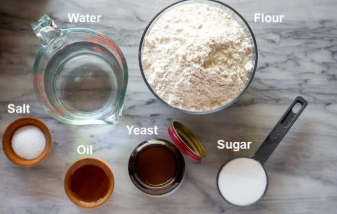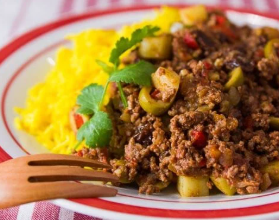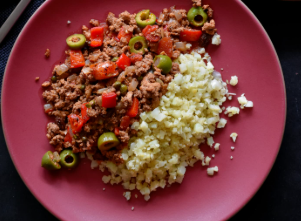History of Costa Rican Picadillo

The history of Costa Rican Picadillo traces back to the blending of Spanish, indigenous, and African culinary influences in the region.
Its cultural significance lies in its representation of the diverse heritage of Costa Rica.
Regional variations add depth to the dish, with each area incorporating unique ingredients and cooking techniques.
This fusion of traditions has resulted in a flavorful and cherished dish enjoyed by many in Costa Rica.
Traditional Ingredients Used in Picadillo
Traditional Costa Rican Picadillo is renowned for its distinct flavor profile, attributed to key ingredients that are emblematic of the region’s culinary heritage.
The combination of ingredients such as ground beef, bell peppers, onions, garlic, and tomatoes creates a rich and savory base for this beloved dish.
These traditional components not only contribute to the authentic taste of Picadillo but also showcase the unique blend of flavors that define Costa Rican cuisine.
Key Picadillo Ingredients
Commonly found in Costa Rican Picadillo are a harmonious blend of ingredients that contribute to its rich and savory flavor profile.
- Ground beef or pork
- Bell peppers
- Onions
These key ingredients are typically sautéed together with a mix of spices and herbs to create a flavorful base for the dish.
Cooking methods like simmering are often used to ensure all flavors meld together perfectly.
Substitutions such as turkey or tofu can be made for dietary preferences.
Read more : Ingredients Needed
Authentic Flavor Profile
Drawing upon generations of culinary tradition and local ingredients indigenous to Costa Rica, the authentic flavor profile of Costa Rican Picadillo is a nuanced blend of sweet, savory, and aromatic notes that captivate the palate.
The cultural significance of this dish lies in its ability to achieve a perfect flavor balance, where the sweetness from ingredients like plantains and the savory elements from meats create a harmonious culinary experience.
Spices That Elevate the Flavor
To enhance the vibrant flavors of Costa Rican Picadillo, a carefully selected blend of aromatic spices is essential in elevating the overall taste profile of this traditional dish.
- Cumin: Adds a warm, earthy flavor.
- Paprika: Provides a subtle sweetness and smokiness.
- Coriander: Imparts a citrusy and slightly floral note to the dish.
Versatile Ways to Serve Picadillo
Exploring the various ways to present Costa Rican Picadillo opens up a world of culinary possibilities, allowing for creativity and adaptation to different dining preferences and occasions. When serving Picadillo, consider pairing it with traditional sides like rice and beans, plantains, or corn tortillas. For a modern twist, use it as a filling for empanadas or tacos. The versatility of Picadillo makes it a delightful choice for any meal.
| Serving Suggestions | Pairing Options | Occasions |
|---|---|---|
| Rice and Beans | Corn Tortillas | Casual Dinners |
| Plantains | Empanadas | Family Gatherings |
| Corn Tortillas | Tacos | Potluck Parties |
Step-by-Step Cooking Instructions
To successfully prepare Costa Rican Picadillo, it is essential to understand the key POINTS of the recipe.
From gathering the necessary Ingredients and Prep to mastering the Cooking Technique, each step plays a crucial role in achieving the authentic flavors of this traditional dish.
Ingredients and Prep
Consider gathering all the necessary ingredients and preparing them meticulously to ensure a smooth cooking process for the Costa Rican Picadillo.
Ground beef provides protein for muscle growth.
Potatoes offer essential vitamins and minerals.
Bell peppers add a pop of color and vitamin C.
Pair this nutritious picadillo with a side of rice or enjoy it with warm tortillas for a wholesome meal.
Cooking Technique
Commence the cooking process by heating a skillet over medium heat and adding a small amount of oil to prevent sticking. Utilize sautéing techniques to cook the ingredients thoroughly while layering flavors. Ensure each component is cooked to perfection before moving on to the next step. Engage in flavor layering by adding spices gradually to enhance the overall taste profile of the Costa Rican Picadillo.
| Sautéing Techniques | Flavor Layering |
|---|---|
| Cook ingredients evenly | Add spices gradually |
| Use medium heat | Enhance taste profile |
| Stir frequently | Build complexity |
| Ensure ingredients are tender | Develop rich flavors |
Tips for Perfecting Your Picadillo
Enhance the flavor profile of your Costa Rican picadillo by incorporating a variety of aromatic spices and fresh herbs during the cooking process.
To perfect your picadillo, consider these tips:
- Toast whole spices before grinding for a more intense flavor.
- Use a combination of sweet and savory ingredients for a well-rounded taste.
- Adjust the acidity with a splash of vinegar or citrus juice to achieve optimal flavor balance.
Variations to Customize Your Dish
To personalize your Costa Rican Picadillo, explore a range of ingredient variations that can cater to your culinary preferences and dietary needs.
Consider adding custom toppings like avocado slices, crumbled queso fresco, or a drizzle of hot sauce for an extra layer of flavor.
Additionally, you can experiment with regional variations by incorporating ingredients specific to different regions of Costa Rica, such as plantains from the Caribbean coast or corn from the Central Valley.
Conclusion
In conclusion, Costa Rican Picadillo is a flavorful and versatile dish that showcases the country’s rich culinary heritage.
With a blend of Spanish, indigenous, and African influences, this beloved dish is a staple in Costa Rican cuisine.
From traditional ingredients to spices that elevate the flavor, Picadillo offers a delicious and satisfying meal that can be customized to suit individual preferences.
Whether served with rice and beans or plantains, Picadillo is a true delight for the taste buds.



